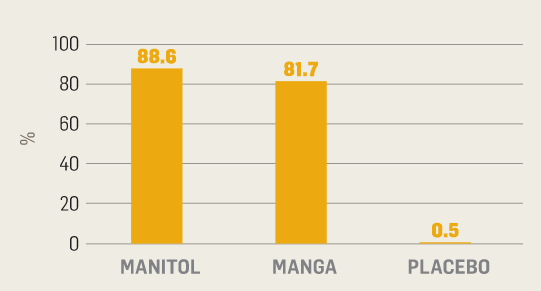Enhanced TDS
Knowde-enriched technical product data sheet
Identification & Functionality
- INCI Name
- Ingredient Origin
- Cosmetic Ingredients Functions
- Technologies
- Product Families
Features & Benefits
- Benefit Claims
- Labeling Claims
- Mango
Rich in Vitamin A
The mango tree, originally from lndia, is a tropical tree which belongs to the Anacardiaceae family the same as the cashew tree. ln Brazil, there are around five hundred varieties of mango, varying widely in size, shape and color. The smallest mangoes are the size of a plum, while the bigger varieties can weigh up to 2kg. Mangoes also vary greatly in shape, being round, oval, heart shaped or elongated.
As regards color, the skin can be dark green, yellow or red, depending on the variety. Mango pulp is succulent, with a very distinctive flavor; it is sometimes fibrous and has a color that ranges from light yellow to dark orange.
Mangoes are extremely rich in vitamin A (especially when ripe) and contain reasonable quantities of complex B vitamins and vitamin C, as well as some mineral salts, mainly iron.
They also have diuretic properties, which means they are recommended for people who tend to retain liquid in their bodies. The bark of the tree is used as an infusion for the treatment of colic.
The leaves and pulp of the fruit in syrup form are recommended against colds and bronchitis. The leaves and skin are also used in the treatment of dairrhoea and asthma.
- Functions
Mango is a nutritive fruit, rich in vitamins, essential sugars, flavonoids antioxidants and mineral salts. FRULIX CERTIFIED MANGA (Mango) boasts emollient, moisturizing, nutrient and protective properties and is recommended in hair care products (shampoos, mousses, hair masks, conditioners) in formulas for the replenishment, nutrition and protection of weakened hair. The moisturizing properties of mangos also mean that FRULIX CERTIFIED MANGA (Mango) is recommended for the treatment of skin, in products with nutritive and moisturizing appeal.
Applications & Uses
- Application Format
- Bath & Shower Applications
- Hair Care Applications
- Skin Care Applications
- Use Level
- 1.0 - 6.0%
- Application pH Range
- 4.00 - 11.00
- Applications
As a more concentrated product, FRULIX CERTIFIED MANGA (Mango) should be used in smaller concentrations than those normally used when making formulas with conventional extracts.
- Usage Guidelines
FRULIX CERTIFIED MANGA (Mango) is compatible with the majority of ingredients used in cosmetic formulations for the treatment of skin and hair and may be incorporated cold, directly into the aqueous phase of the formulas, in accordance with the suggestions of usage levels found in the table below. It is stable at temperatures up to 90 ºC, in pH conditions from 4.00 to 11.00.
PRODUCT % Moisturizing cream 1.0 to 3.0 Moisturizing lotion 1.0 to 3.0 Night cream 2.0 to 6.0 Nutritive cream 2.0 to 5.0 Hair mask 2.0 to 8.0 Shampoo 1.0 to 5.0 Conditioner 1.0 to 5.0 Shower gel 1.0 to 3.0
Properties
- Physical Form
- Composition
Value Units Test Method / Conditions Calcium Content (Mineral Salts) 72.54 mg/L - Copper Content (Mineral Salts) 0.98 mg/L - Iron Content (Mineral Salts) 8.82 mg/L - Magnesium Content (Mineral Salts) 147.04 mg/L - Manganese Content (Mineral Salts) 0.98 mg/L - Potassium Content 431.32 mg/L - Proteins Content min. 50 mg/L - Pyridoxine Content (B6,Vitamin *) 0.99 mg/L - Sodium Content (Mineral Salts) 196.05 mg/L - Thiamine (B1,Vitamin *) 0.19 mg/L - Zinc Content (Mineral Salts) 1.96 mg/L - - Note
Vitamin * - *Tested after 4 months from manufacturing
Regulatory & Compliance
- Certifications & Compliance
Technical Details & Test Data
- Antioxidant Action
The test for antioxidant action was carried out in accordance with the Fenton protocol, comparing FRULIX CERTIFIED MANGA (Mango) with a saline solution (placebo) and with manitol as a positive control. The graph below shows the antioxidant action compared to the action of the saline solution.
Inhibition of Decomposition of Deoxy-Ribose (Fenton)

FRULIX CERTIFIED MANGA (Mango) shows good anti-oxidant activity when compared to the placebo (81.7%).